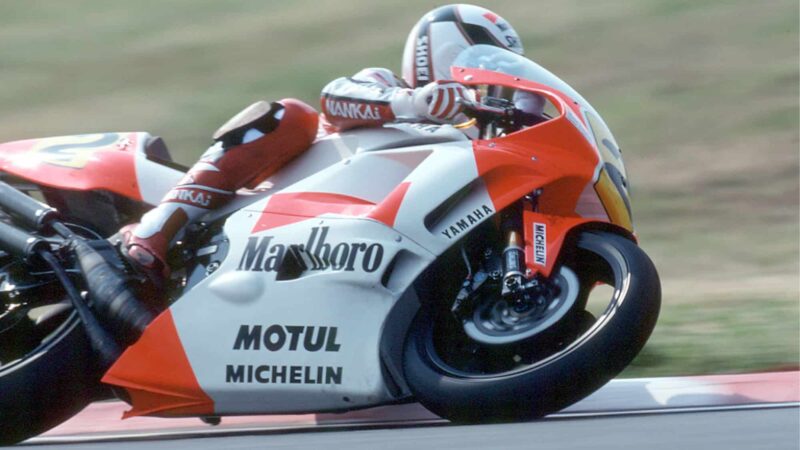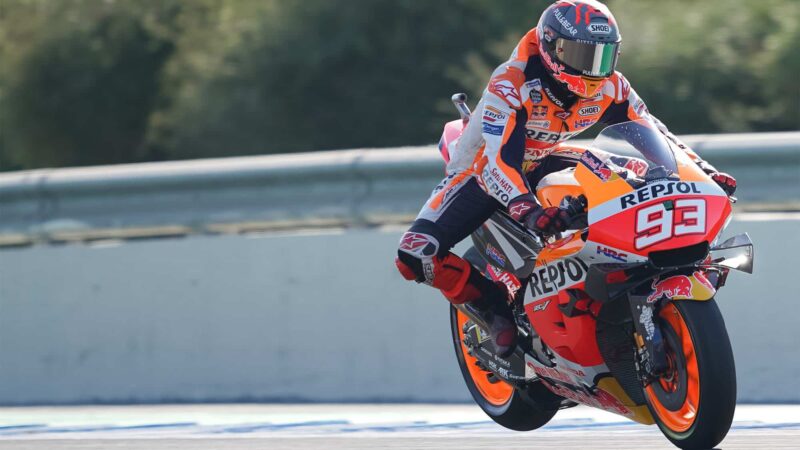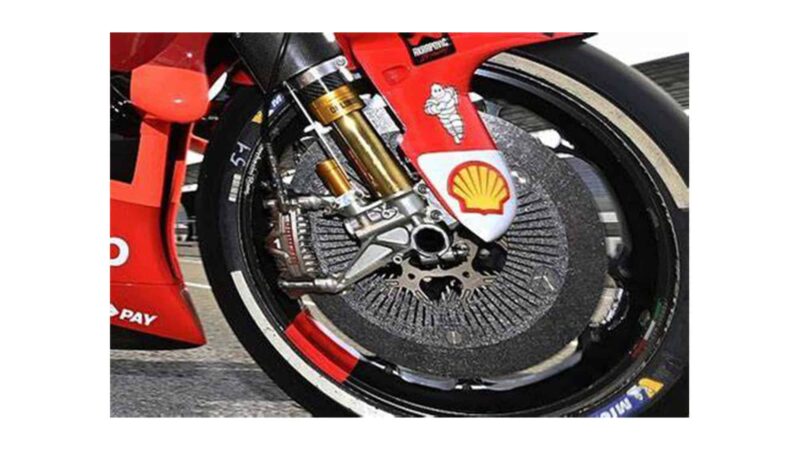But an F1 car has four fat tyres, plus it’s lower and longer and the driver is strapped in like a fighter pilot.
When a MotoGP rider brakes he takes most of his weight – around 80 kilos with riding gear – through his wrists, although he dissipates some of that force through his crotch, thighs, backside and feet, which are fully wedged against the fuel tank, seat and footpegs.
At 2g the rider’s weight generates a force of approximately 1570 Newtons, which is a lot. The world’s strongest weightlifters lift around 200 kilos. Of course, MotoGP riders aren’t lifting their weight, but the 1570 Newtons is equivalent to a rider resisting up to 160 kilos every time he uses maximum brake force, perhaps twice a lap, or 50 times during a 40-minute race. And obviously he reaches forces close to that much more frequently throughout the race. That’s an extraordinary feat.
It’s taken a long time to get here.
Carbon disc rotors (made from carbon-carbon – carbon fibres in a matrix of graphite) were first used by Team Roberts Yamaha at the 1988 British GP. They were so good right away that Wayne Rainey won first time out with them, because not only do carbon brakes make the bike stop quicker they also reduce the weight of the front wheel, decreasing gyroscopic effect, which makes the bike turn much quicker.
By the early 1990s a 500cc GP bike pulled around 1.5g on the brakes. And the g wasn’t much greater ten years ago.

Wayne Rainey using carbon discs in 1991 – rotors are much bigger now due to increased speeds and machine weigh
Yamaha
Motorcycles brake much less viciously than F1 cars mainly because they’re so short. It’s simple physics – the bike wants to loop the loop during heavy braking. That’s why increasing braking power or grip beyond certain levels doesn’t make any real difference.
It’s the same when the rider releases the brakes and gets on the throttle. During heavy acceleration a MotoGP bike wants to loop the loop backwards, so the limit of acceleration isn’t horsepower or traction, it’s wheelies. Which is why factories spent so much time and money creating front-end downforce with their new-fangled aerodynamics.
“G-force has increased so much in the five years since MotoGP aero became a big thing”
What are the reasons for the big increase in braking g-force in recent years?
MotoGP aerodynamics engineers design their aero to increase downforce during acceleration, but the aero also helps when the rider is on the brakes. The strakes, wings and swingarm ‘swinglets’ make the bike more stable, the extra drag they create helps stop the bike and although they increase front load they don’t reduce rear-load, so they improve braking all-round.
This is why braking deceleration g-force has increased so much in the five years since MotoGP aero became a big thing.
At the same time engineers have rebalanced MotoGP bikes, taking advantage of the improved stability to allow riders to use the rear brake more, so the Michelin rear can help the Michelin front to stop the bike, which further increases deceleration g.





